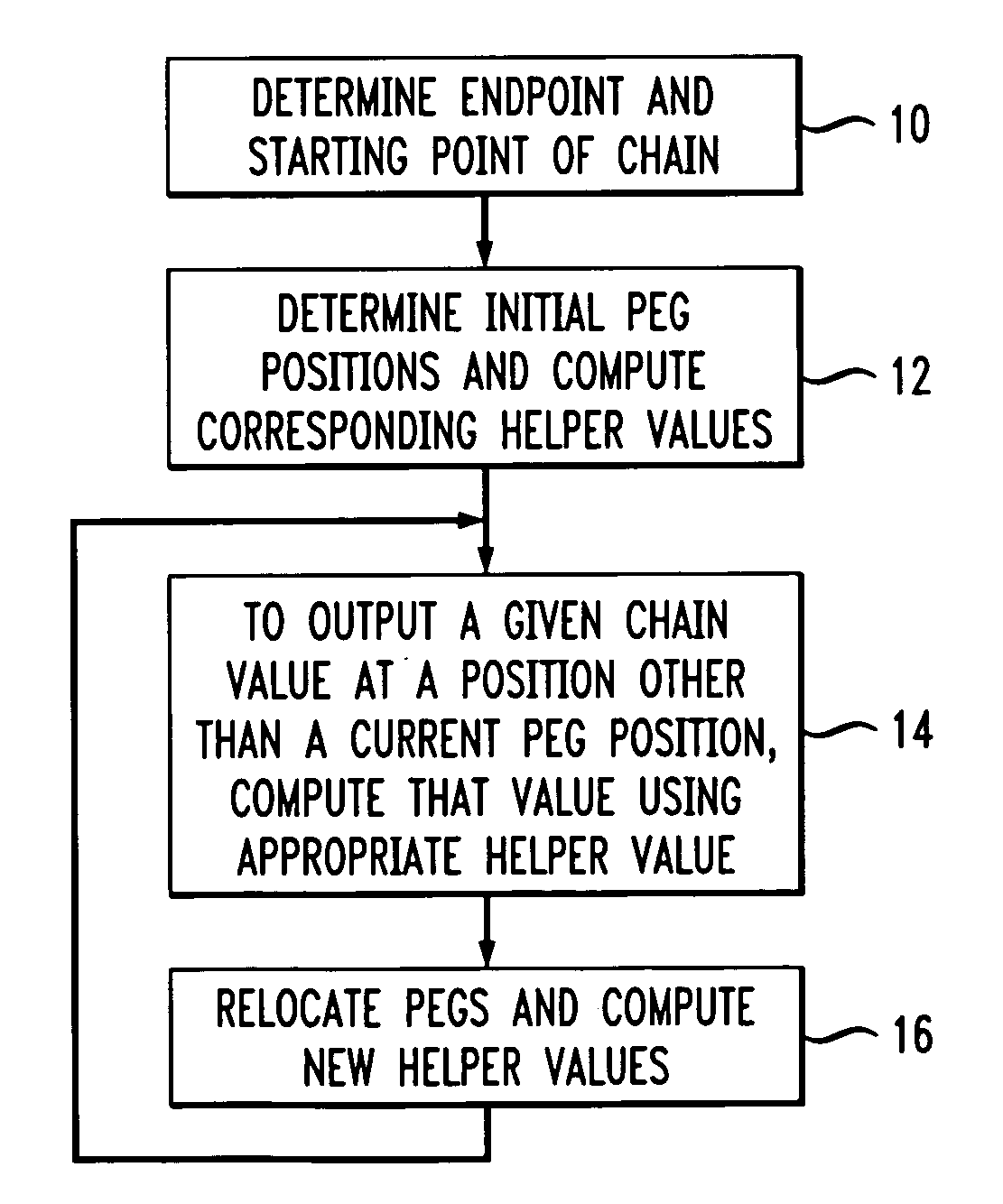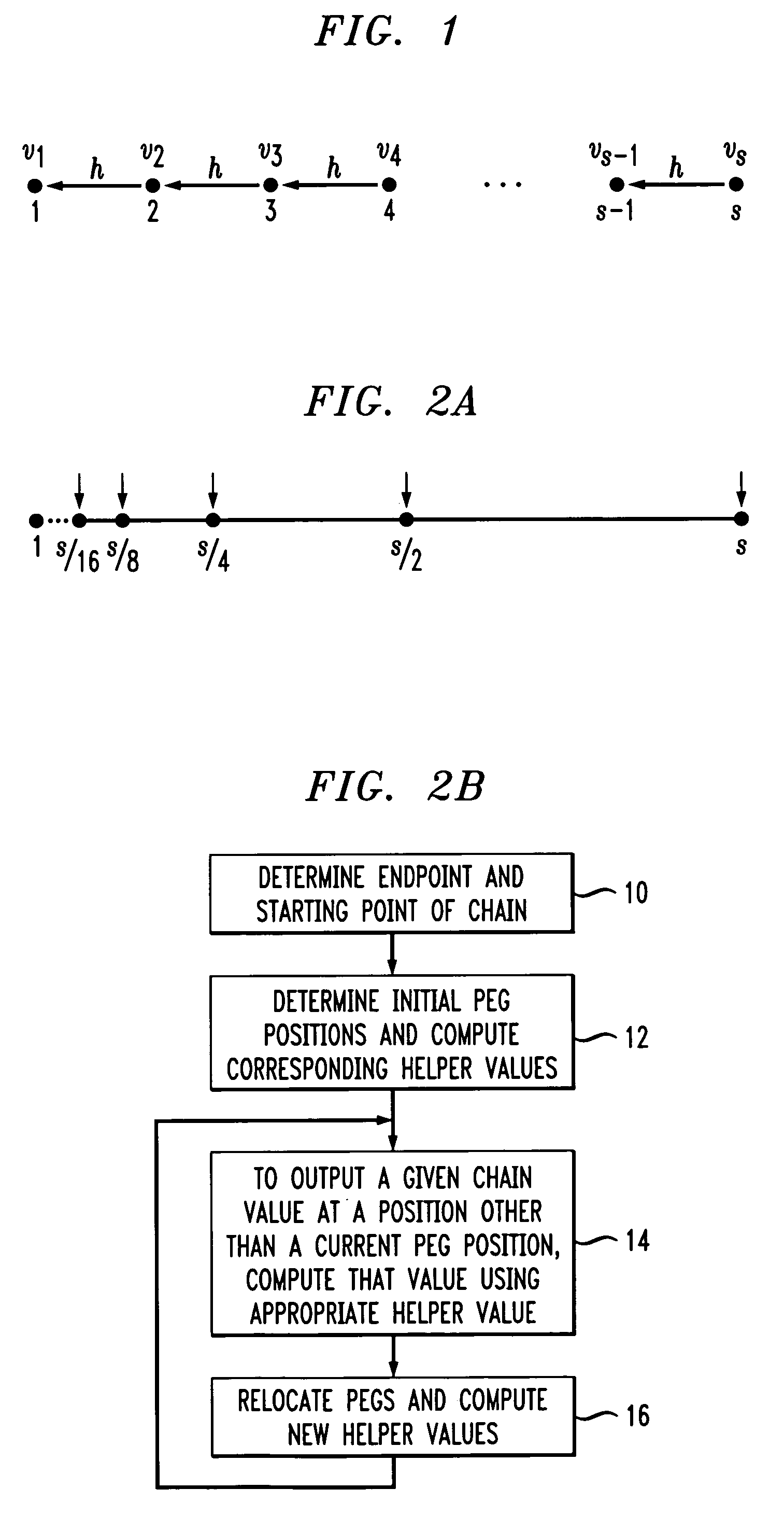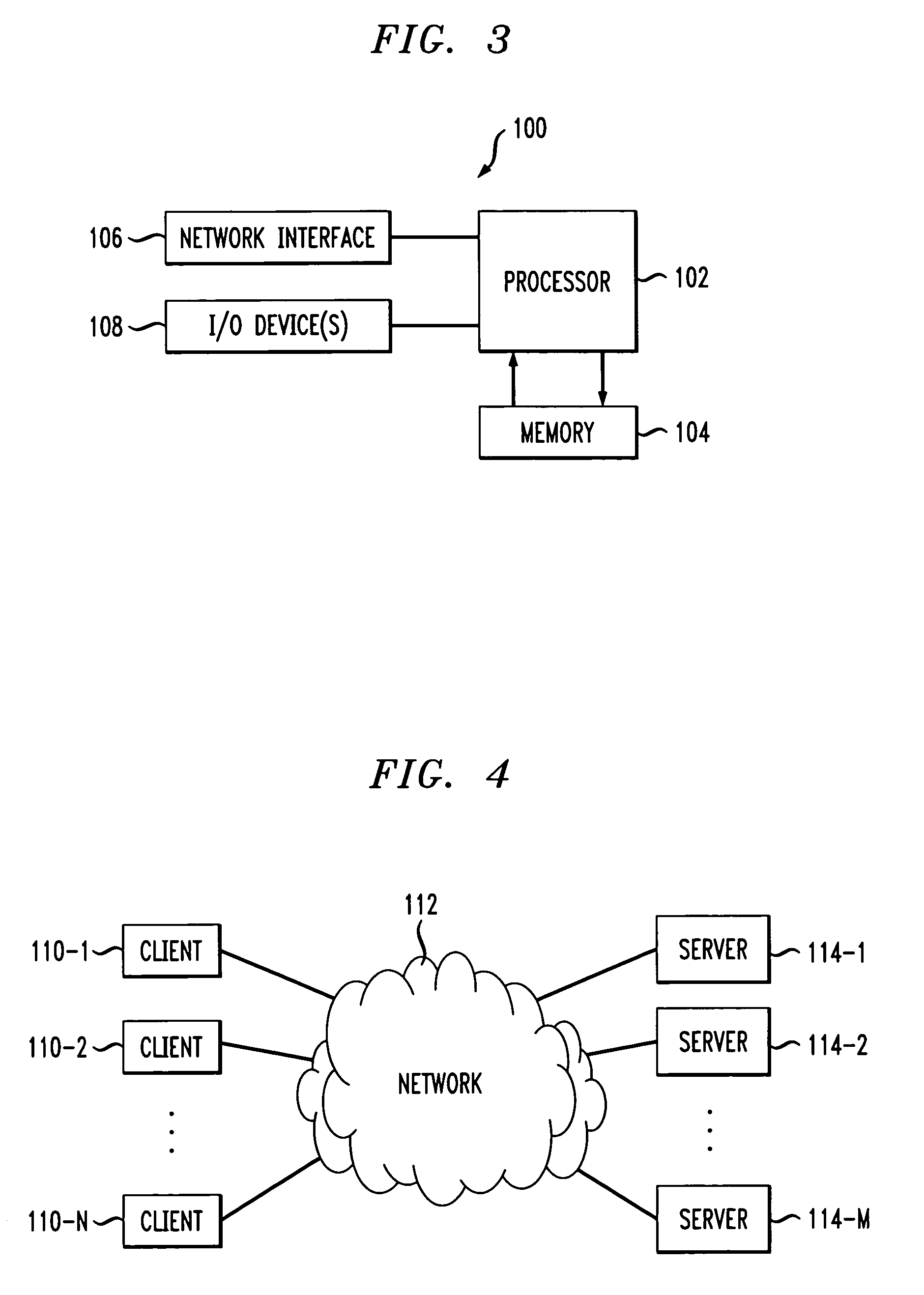Methods and apparatus for efficient computation of one-way chains in cryptographic applications
- Summary
- Abstract
- Description
- Claims
- Application Information
AI Technical Summary
Benefits of technology
Problems solved by technology
Method used
Image
Examples
example 1
[0097]Tree structure. In such a structure, the endpoint value vs corresponds to the root node of the tree. For simplicity of notation, this node will be referred to as R. Let V1 and V2 be the two children of R, and V11 and V12 be the two children of V1. Similarly, one can name all the nodes in the tree. It will be clear to one skilled in the art that the invention relates not only to binary trees, as above, but to trees with any fan-out of the vertices. Let s be the height of the tree. The value associated with the root is R.val, and may be randomly chosen, and let Vx.val be the value associated with the node Vx, where x denotes a particular path, such as “1112.” Then, the value of the first child of Vx is Vx1.val=h(Vx.val,1), and the value of the second child of Vx is Vx2.val=h(Vx.val,2). Other assignments may be chosen as well, as will be appreciated by one skilled in the art. From this, it can be seen that given the value associated with a node Vx1 or Vx2, it is infeasible to det...
example 2
[0098]Two linked chains. Consider a situation in which there are two linked chains, each having its own endpoint, and where some fraction of the chain values are functions not only of the values of their corresponding chain, but also of values of the other chain. Note that the different chains may use different one-way functions, and may operate on different portions of the input. This situation therefore describes a particular form of a directed acyclic graph (DAG), and it will be appreciated by those skilled in the art that other such examples can be constructed. In a simple case, one can let every element at distance i from the endpoint of its chain be a function of both its predecessor (element i−1 of that chain) and of the other element at that distance from the endpoint of the other chain (element i−1 of the other chain). Let the lengths of each of the chains be s, and assume that pegs have been placed at distances s / 2, s / 4, s / 8, etc., from the starting point of one of the cha...
PUM
 Login to View More
Login to View More Abstract
Description
Claims
Application Information
 Login to View More
Login to View More - R&D
- Intellectual Property
- Life Sciences
- Materials
- Tech Scout
- Unparalleled Data Quality
- Higher Quality Content
- 60% Fewer Hallucinations
Browse by: Latest US Patents, China's latest patents, Technical Efficacy Thesaurus, Application Domain, Technology Topic, Popular Technical Reports.
© 2025 PatSnap. All rights reserved.Legal|Privacy policy|Modern Slavery Act Transparency Statement|Sitemap|About US| Contact US: help@patsnap.com



